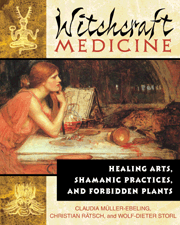I have just finished
Bone Walker, by the prolific Kathleen O'Neal Gear and W. Michael Gear, last in a series of novels set among the Anasazi people of the Southwest in about the 13th century. It is the third of a series, actually, and in the words of the authors'
Web site, "
Bone Walker ties all the threads woven in
The Visitant and
The Summoning God together."

The Gears used to be archaeologists. No doubt they got out of the profession due to its apparent high homicide rate, if we are to believe them, Tony Hillerman, Jake Page, and other writers. I always knew that archaeology was a high contentious and even vicious field; now we see that it is probably the most murderous corner of Academia.
If you read
Bone Walker, personal knowledge or a
map of Chaco Canyon, New Mexico, is essential.
The interesting thing about the Gears' novels is that they incorporate current archaeological thinking, e.g., how might the cannibalism documented by Arizona State University's
Christy Turner have occurred? Was there really religious warfare between followers of the
"kachina cult" and other people?
Frankly, I wonder if the religious-warfare angle is not overdrawn. It sounds too much like 16th-century Europe: "Die, Protestant dogs!" I like to think that people who did not have "holy scripture" telling them what to do would be more likely to go to war for the usual reasons--resource control, prestige--and less over dogma or the nature of the gods.
For people who must spend a lot of time outdoors, the Gears do include some oddities. For instance, these Anasazi warriors skulking in Chaco Canyon are always trying to sneak from one town to the next in the "period of darkness between sunset and the rising of the New Moon." Now think about that. One thing about us Pagans--we at least know when the Moon comes up.
And one woman, the beautiful but deceitful Obsidian, she of the perfect full breasts, goes jogging down the Great North Road with the warriors. Did the Anasazi invent the sports bra?
Labels: archaeology, Writing
 I am in debt to Mark Morford's SF Gate column on the latest, must-have
I am in debt to Mark Morford's SF Gate column on the latest, must-have  The book is more a study of cultural transformation using texts and art work. The three "explore the demonization of nature's healing powers and sensuousness, the legacy of Hecate, the sorceress as shaman, and the plants associated with witches," to quote the back-cover blurb.
The book is more a study of cultural transformation using texts and art work. The three "explore the demonization of nature's healing powers and sensuousness, the legacy of Hecate, the sorceress as shaman, and the plants associated with witches," to quote the back-cover blurb.  It's quite a bit like
It's quite a bit like 


